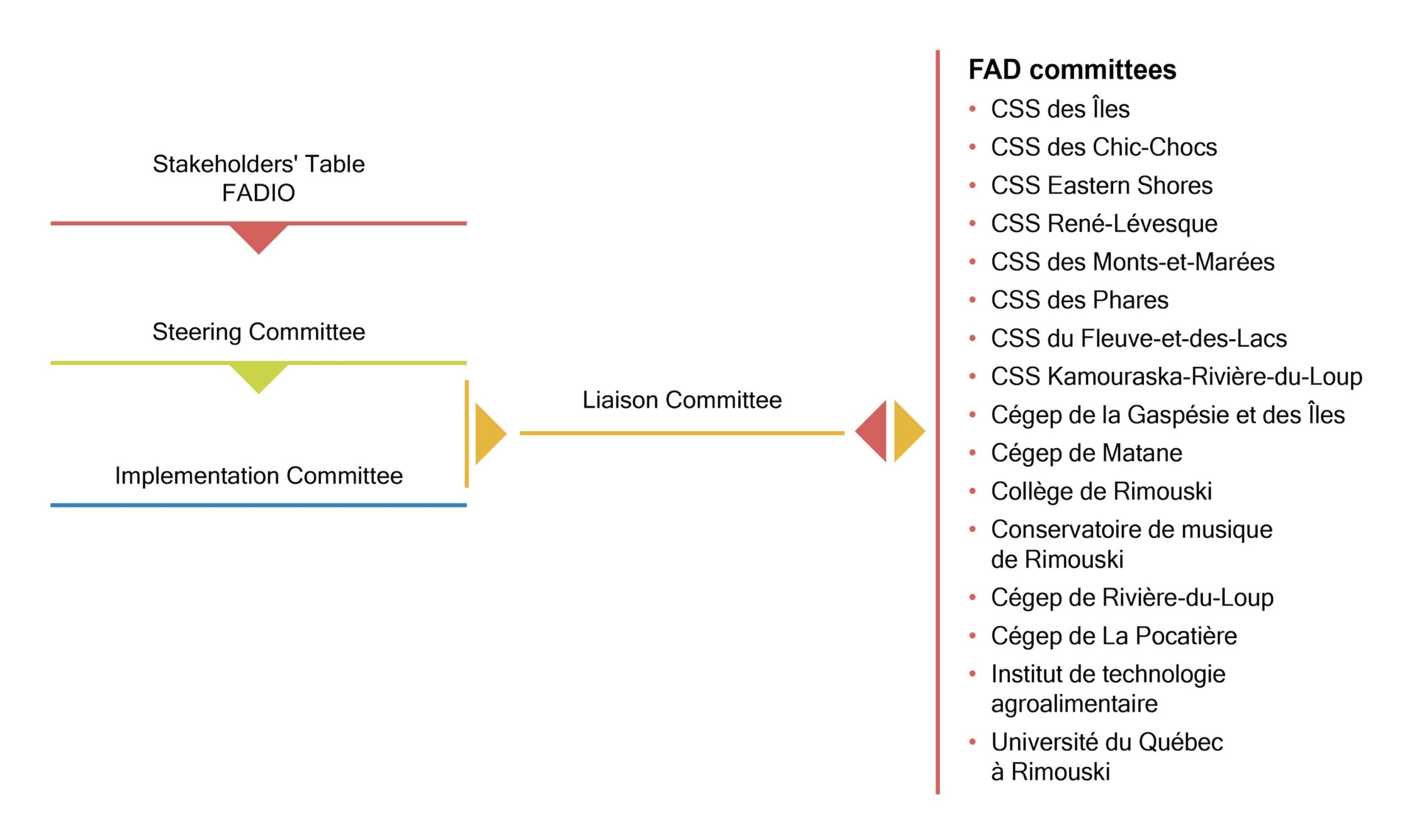History
In 2008, educational institutions in the regions of the Lower St. Lawrence, Gaspé Peninsula and the Magdalen Islands were facing a significant demographic decline. A challenge was becoming increasingly evident: finding solutions to make training accessible in this vast territory. Distance learning met this need. After they provided a few distance courses, the institutions quickly learned that the costs associated with the deployment of DL were considerable and that none of them had sufficient resources to ensure that continuity. From that point on, the institutions planned to join together to set up the Formation À Distance interordres (FADIO) project, since it would allow them to share their expertise and benefit from that of others. In 2013, they signed their first collaboration agreement, set up a collaborative governance structure, formed working committees and implemented a collective action plan.
Governance
The collaborative governance structure consists of a Stakeholder Advisory Committee, Steering Committee, Implementation Committee and Liaison Committee.
FADIO’s model is unique and each institution is called upon to be actively involved to ensure its smooth operation. Each educational player is invited to participate in the development of best practices in distance learning through the consultation bodies, i.e., the committees and communities of practice that have been set up. Teaching staff, pedagogical advisors, IT specialists and managers all play an important role in identifying the winning conditions for distance education. This is why all these people are involved in the implementation of FADIO’s action plan.
This is based on the needs of the institutions and each action deployed must respond to all levels of education. In addition, each institution retains its autonomy.

SUBSCRIBE
TO OUR NEWSLETTER

